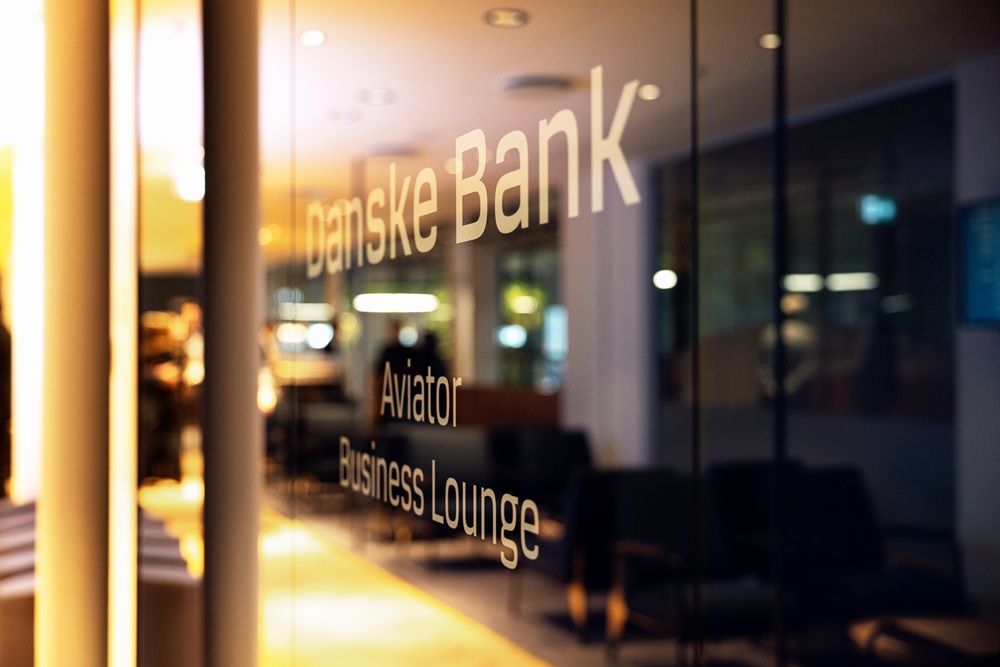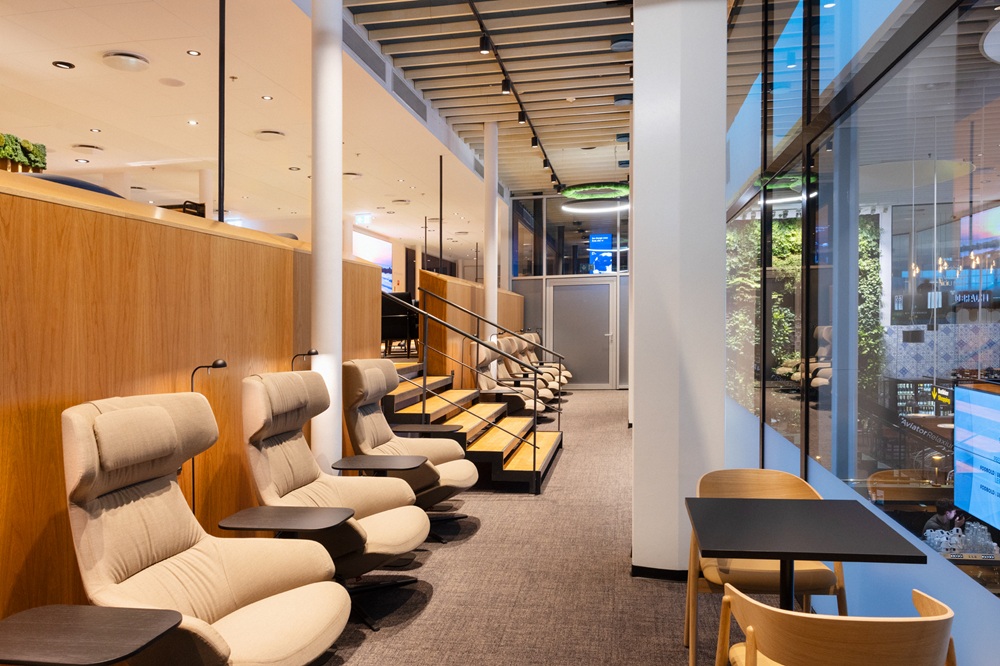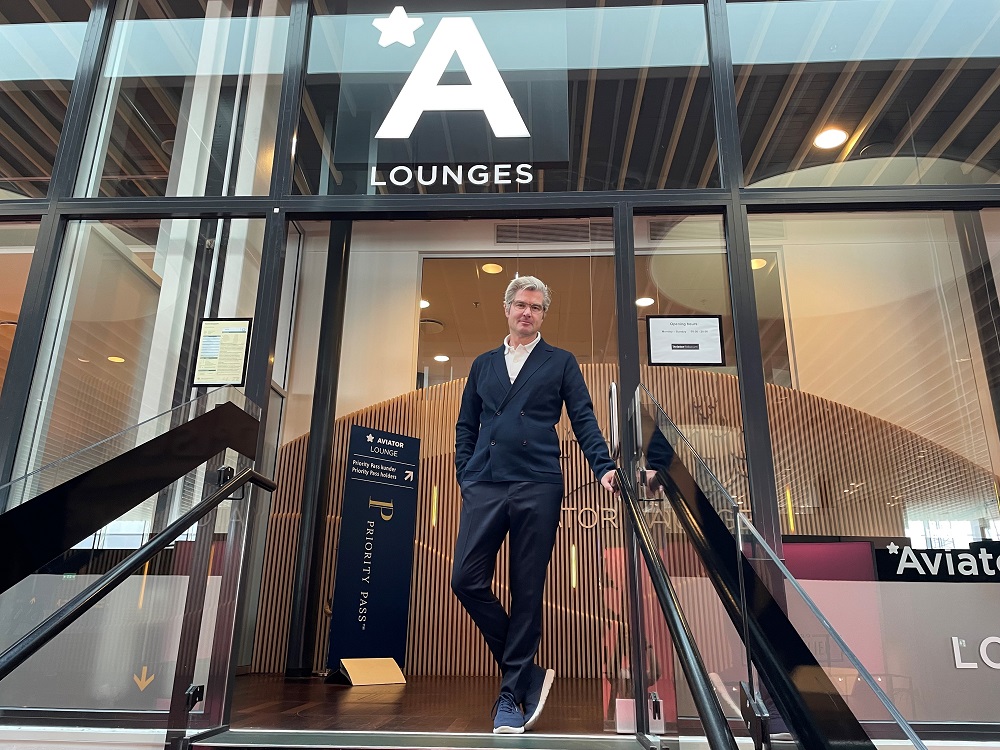 As technologies are developing faster than ever, economies expand, incomes rise, and the tourism industry grows, more and more people and business choose air travel as the best option to reach their destination as fast and convenient as possible. The changing landscape with growing number of passengers makes airports key players in the broader travel experience. Patrik Bayardo, Head of Hospitality at Aviator Airport Alliance, a full-range provider of aviation services and a family member of Avia Solutions Group, shares his insights on evolving passenger hospitality trends and the challenges airports are facing in hospitality amenity management, like business lounges today.
As technologies are developing faster than ever, economies expand, incomes rise, and the tourism industry grows, more and more people and business choose air travel as the best option to reach their destination as fast and convenient as possible. The changing landscape with growing number of passengers makes airports key players in the broader travel experience. Patrik Bayardo, Head of Hospitality at Aviator Airport Alliance, a full-range provider of aviation services and a family member of Avia Solutions Group, shares his insights on evolving passenger hospitality trends and the challenges airports are facing in hospitality amenity management, like business lounges today.
Broader Travel Experience and the Role of Airports
The International Air Transport Association (IATA) forecasts that in 2025, air passenger numbers will exceed five billion for the first time, reaching 5.2 billion – a 6.7 % rise compared to last year. The growing number of passengers choosing to travel by air also shows that people are valuing their time more, preferring to spend it on enjoyable activities and expecting comfortable and convenient airport experiences.
Airports have evolved beyond being mere transit hubs. They play a crucial role not only in the journey and satisfaction of travellers but also in the local ecosystem. This means that airports need to reconsider the variety and nature of experiences they offer to both passengers and the airport’s community, particularly regarding airport hospitality amenities. As an example, some time ago, business lounges were exclusive perks for frequent flyers, but now they transformed into strategic assets reflecting ever-growing passenger expectations. These spaces are no longer just about comfort. They can generate substantial non-aeronautical revenue and, at the same time, be an important addition to the airport, enhancing traveller interaction,” notes Patrik Bayardo.
Since hospitality amenities, like airport lounges have become a competitive advantage in retaining happy passengers and meeting their rising demands, it is valuable for airports to consider strategic partnerships. Partnerships among airports, financial institutions, hospitality providers, and technology companies play an important role in ensuring lounge quality and financial stability.
Latest Airport Lounge Trends:
Many airports are providing smoother experiences while airlines are improving their in-flight services, raising the expectations of modern travellers. “A business lounge is no longer just a place to rest before or after flights. It is a unique space to interact and entertain, use your time efficiently as a passenger, experience the local culture and enhance your overall journey experience,” observes Bayardo.
“Lounges are adopting revenue management strategies and technology from the airline and hospitality industries to enhance efficiency and profitability. This change has led to the transformation of lounges from exclusive, membership-based spaces into revenue-driven models that are accessible to a broader range of travellers. Pre-booking and dynamic pricing allow lounges to optimise capacity, drive revenue, and align pricing with demand fluctuations. To improve passenger satisfaction, it is important to adopt efficient digital access systems. Some examples could be biometric authentication or mobile check-ins, which not only add up to traveller convenience but also help to reduce operational expenses,” continues the expert in hospitality.
Personalisation is also one of the key elements, helping the lounge to attract more customers. It can be service tailoring driven by AI, starting with food and beverage choices, seating, and entertainment – everything based on traveller preferences. Self-service innovations are also useful for the airport, because digital food and beverage ordering, automated bars, and contactless transactions improve efficiency and lower the ongoing operational costs – ultimately making business lounges sustainable at more terminals, and at smaller airports.
We should also prioritise sustainability. Modern lounges are now integrating smart energy management, waste reduction technologies, and eco-friendly materials to meet environmental goals while maintaining premium service standards. Ultimately, lounges are evolving into data-driven, experience-centric spaces that balance guest expectations, operational efficiency, and revenue growth, ensuring they remain key assets in the airport ecosystem,” explains Patrik Bayardo.
Navigating Lounge Management Challenges with Strategic Partnerships
To keep pace with these evolving demands and ongoing trends, airports are increasingly asking themselves on how to best manage and maintain smooth lounges operations.
“Increased lounge adoption and fluctuating passenger traffic make it difficult to allocate staff and resources effectively while maintaining high service standards, which requires significant maintenance, catering, and personnel investment. Additionally, limited airport space can complicate lounge design and expansion efforts. This requires careful planning to ensure maximum efficiency. Other challenges include security and operational regulations that must always be met. All this emphasises the importance of external expertise and financial support which can be achieved with strategic partnerships,” says Bayardo. To manage business lounges, airports often outsource development and operations to partners that bring specialised expertise. Bayardo continues, “A few examples of dedicated lounge companies are Executive Lounges by Swissport, Airport Dimension, Premium Plaza or TAV Operations Services. These companies offer airports their own branded solutions, generally after public tender processes. Strategic brand partnerships have proven to be an alternative solution in addressing financial and service challenges for airports, airlines and lounge operators. “Collaborating with well-known brands — Aviator Airport Alliance’s collaboration with Carlsberg Group in Copenhagen or Qatar Airway’s the Louis Vuitton Lounge by Yannick Alléno, a three-star Michelin Chef, at Hamad International Airport, two examples at the opposite experience’s spectrum — are powerful tools that can elevate the lounge experience and drive value across several dimensions.
“These partnerships not only reinforce premium brand positioning but also introduce new revenue streams, share investment burdens, and deliver differentiated customer experiences. Whether rooted in local heritage or global luxury, they allow lounges to create immersive environments that resonate with their target audiences. From elevating food and beverage offerings to enabling co-branded marketing and product integration, strategic collaborations help transform lounges into lifestyle destinations—enhancing traveller satisfaction while optimizing operational efficiency,” clarifies Patrik Bayardo.
Patrik Bayardo continues: “This dynamic is particularly evident in the financial sector, where credit card issuers have identified lounge access as a key driver of customer acquisition and retention. Airport lounges are no longer just a travel perk—they’re a core feature in premium card strategies. American Express remains the leader with its Global Lounge Collection, recently expanding in Europe with its own branded lounges (Stockholm Arlanda in collaboration with renowned restaurateur Pontus Fritiof). Chase has introduced its Sapphire Lounges, and Capital One has made bold moves since opening its first lounge at Dallas-Fort Worth (DFW) in 2021, now operating several across the U.S. In the Nordics, Aviator Airport Alliance’s newly opened Danske Bank Aviator Lounge at Copenhagen Airport reflects how regional players are also leveraging financial partnerships to deliver elevated, cardholder-exclusive experiences. These collaborations highlight how strategic brand alliances are reshaping the airport lounge landscape—blending financial utility with aspirational travel experiences.”
Future of Airport Lounges
“Speaking about the future of airport business lounges, we can see a growing emphasis on flexibility and personalisation. Many airports are moving away from outsourced lounge management and opting for in-house operations. This allows them to have greater control over the passenger experience and revenue streams. Airports now change the traditional universal lounge model, fitting all passengers, to more segmented experiences. Some of them are offering customised lounge services designed for business executives, families, or leisure travellers, and even private terminals
In conclusion, strategic partnerships will remain a key driver of innovation and growth in airport business lounge management as the industry evolves. These collaborations enhance the passenger experience and ensure that lounges remain financially viable. Their role is an essential component of modern air travel,” concludes Bayardo.








